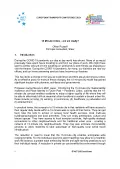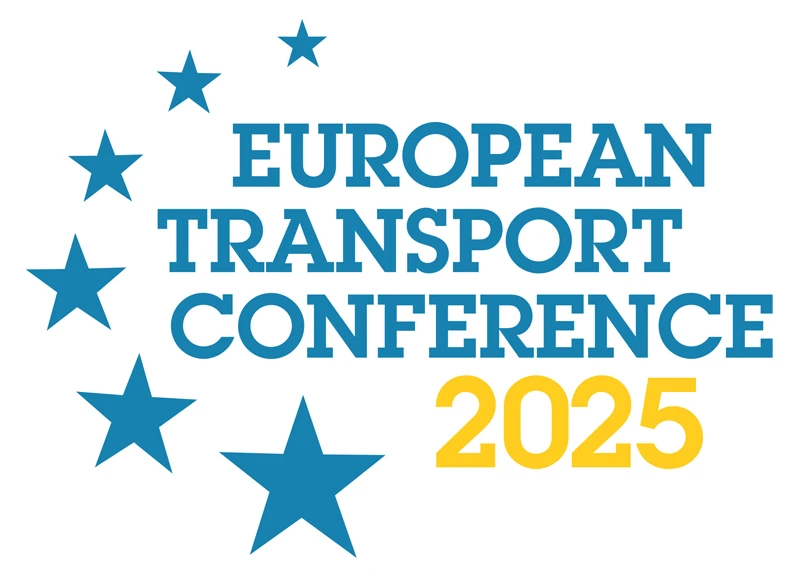-
Past ETC Papers

Browse, search and view papers from the past AET Conferences.
-
Members' Area

AET promotes networking and exchange of ideas, information and opportunities amongst members.
Conference Papers 2021
Online
ETC Conference Papers 2021
15-minute cities: are we ready?
Seminar
Day 3 (15 Sep 2021), Session 7, 15 MINUTE CITY I, 10:00 - 12:00
Status
Accepted, documents submitted
Authors
Oliver Russell
Short abstract
Locally-focused and sustainable models for planning cities have been increasing in popularity, such as the 15-minute city. With planners keen to embrace this model, we use spatial analysis to determine how 15-minute city ready are we?
Abstract
Over the last year our day-to-day world has shrunk. Many of us would previously have spent hours each day travelling to and from our place of work. We might have spent a similar amount of time travelling on weekends to see friends, go shopping or visit the theatre. Now our kitchens are our offices, and our theatres are our streaming services.
This has led to a change in the way we experience our cities and consequently think about planning them.
Encapsulating many of these changes, the 15-minute city model has gained significant traction with planners, architects and governments.
In the 15-minute city, residents have access to all their daily needs within a 15-minute walk of their home. They can purchase food, take the kids to school and access local health services. They can enjoy greenspace, culture and leisure spaces. They have access to local transport services and high-quality strategic connections to other neighbourhoods and the traditional urban core - creating a network of 15-minute neighbourhoods. They embrace micromobility services to allow residents to take advantage of high-quality local active travel infrastructure.
The reduction in need to travel that the 15-minute city enables could result in wide ranging benefits. For the individual, less time spent travelling may allow for a healthier work-life balance. People may experience a greater ease embracing flexible and agile working practices to suit their individual needs. A reduction in private car use benefits the environment through lowered air and noise pollution, while a focus on the quality of local natural spaces provides opportunities for exercise, leisure and recreation. Local communities become more relevant, appealing and inclusive, particularly for those with accessibility issues.
With our minds constantly fixed on life after lockdown, what happens if we don’t embrace the sort of locally driven sustainable recovery that the 15-minute model encapsulates? If we retain the need to travel miles – and often hours – to reach employment and services, what could the impacts be? With many people remaining cautious of public transport, they would have two options – drive, or stay at home. Either option could potentially have negative long-term impacts for the environment, economy and the wellbeing of individuals.
15-minute cities are working their way into the plans and strategies of cities across the world. Paris, London, Melbourne, Ottawa – many cities are keen to explore how they can embrace this model. But are they ready? If not, what is needed to enable such a transformation? These are some of the questions we have been asking at Steer.
Our paper will consider the role of the 15-minute city in the UK through a comparative investigation of two of England’s biggest cities – London and Manchester. First we will consider what makes a 15-minute neighbourhood. We will determine the services that residents need to access including schools for various ages, health facilities and food shops. We will also determine what amenities residents not just need but want to help reduce the need to travel for leisure and social activities. This could include restaurants, pubs, cinemas and sports centres.
Considering this catalogue of information from a spatial perspective, we will use this information to investigate how many people in London and Manchester already live in a ’15-minute neighbourhood’ and what these neighbourhoods look like. Conversely, we will look at where people are lacking the services needed to fulfil all their needs locally – what is it they’re missing, and can that easily be fixed? What factors detract from the quality of local neighbourhoods which prevent people from enjoying a healthy and fulfilling lifestyle?
We’ll discuss the spatial and social patterns within these findings and consider the societal and transport impacts our findings have for the individual, neighbourhood and city. Through all of this we will try to answer the question, how 15-minute city ready are we really?
Topic
Inclusion and diversity in transport
Documents:

Association For
European Transport
Forester House
Doctors Lane
Henley-in-Arden
Warwickshire, UK
B95 5AW
+44 (0) 15 64 793552
VAT number: 710 1866 64
Conference Supporters & Endorsers




Legal Entity
The Association for European Transport is registered as an Association ('vereniging') with the Chamber of Commerce for Haaglanden in The Netherlands under company number 27170096.
Built on Zenario




